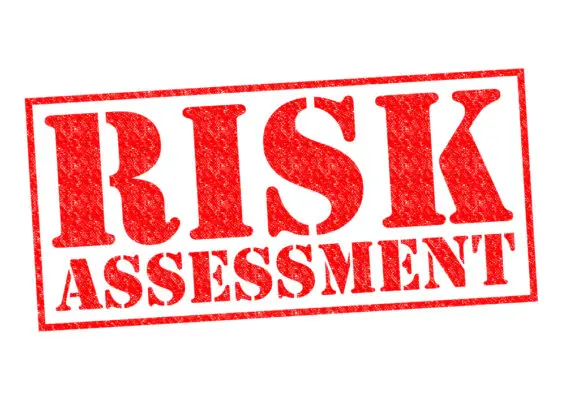Risk assessment is a component of decision-making processes in various fields, such as finance, engineering, and healthcare. It involves identifying potential risks and evaluating their impact to make informed decisions.
Understanding the definition of impact is essential in risk assessment as it allows for a thorough analysis of the consequences that may arise from specific risks.
Impact refers to the severity and extent of harm caused by a risk event or scenario. By comprehensively assessing the impact, individuals can develop effective mitigation strategies to minimize negative outcomes.
This analytical approach enables decision-makers to objectively evaluate the potential consequences and make informed judgments regarding risk management.
Consequently, an accurate understanding of the impact of risk assessment is vital in ensuring proactive measures are taken to mitigate risks and protect stakeholders’ interests.

Importance of Understanding Impact in Risk Assessment
Understanding the impact of various factors in risk assessment is crucial for accurately evaluating potential risks and making informed decisions.
Risk analysis involves identifying, evaluating, and prioritizing potential risks to determine their likelihood and potential consequences. It helps organizations assess the risk associated with different activities or projects and develop strategies to manage or mitigate them.
The impact of risk refers to the extent of its consequences on an organization’s objectives, such as financial loss, reputational damage, or operational disruptions.
Organizations can effectively manage high-impact risks by prioritizing their resources and efforts based on the impact of various risk factors.
This proactive approach helps minimize potential losses and maximize opportunities for success in a constantly changing business environment.
Identifying Potential Consequences of Risks
Identifying potential consequences of risks involves examining the potential outcomes and implications that may arise from those risks, thereby prompting a heightened sense of concern and urgency within individuals.
This step is crucial in risk assessment as it allows for a comprehensive understanding of the potential impact of specific risks on various aspects, such as financial stability, reputation, or operational efficiency.
Measuring probabilities and assessing potential consequences go hand in hand with risk analysis techniques. By quantifying the likelihood of each consequence occurring and evaluating its severity, organizations are better equipped to prioritize their response strategies and allocate resources accordingly.
This analytical approach enables decision-makers to make informed choices based on a thorough evaluation of the risks involved, ultimately improving overall risk management effectiveness.
- Potential outcomes:
- Financial losses
- Legal liabilities
- Implications:
- Damage to reputation
- Disruption of operations
Evaluating Severity and Extent of Harm
Assessing the severity and extent of harm allows organizations to gauge the potential magnitude and scope of negative consequences arising from identified risks, enabling them to develop appropriate mitigation strategies.
This process involves evaluating the likelihood of a risk occurring and its potential impact on various aspects of the organization. To evaluate severity, organizations must consider the possible harm that could result from a risk event, such as financial losses, damage to reputation, or harm to individuals.
Additionally, they must assess the extent of harm by considering factors such as how widespread the consequences would be and their duration.
To properly manage risks, organizations must assess their probability and severity and prioritize them according to their potential impact. This is crucial for ensuring resources are allocated to effective risk management strategies.
Developing Effective Mitigation Strategies
Developing effective mitigation strategies involves crafting proactive measures to minimize the potential negative consequences of identified risks, safeguarding the organization’s interests, and bolstering its resilience against unforeseen events.
Strategy implementation is crucial in reducing risks and ensuring successful risk assessment outcomes. It involves translating risk assessments into actionable plans by prioritizing risks based on their severity and likelihood of occurrence.
Risk reduction techniques, such as risk avoidance, transfer, acceptance, and mitigation, can be employed during this process. Risk avoidance entails eliminating or avoiding activities that carry high-risk potential.
Risk transfer involves transferring the responsibility for managing risks to another party through contracts or insurance. Risk acceptance refers to consciously accepting certain risks while closely monitoring them.
Finally, risk mitigation focuses on implementing controls or measures to reduce the impact or likelihood of a risk occurring.
Organizations can enhance their resilience against unexpected events and protect their interests by effectively implementing these strategies to manage and mitigate potential risks.

Making Informed Decisions to Minimize Negative Outcomes
To minimize the potential negative outcomes, it is essential to make informed decisions based on thorough analysis and reliable data. Informed decision-making involves a systematic approach considering all relevant factors, potential risks, and benefits.
It requires gathering and analyzing information from various sources, such as scientific studies, expert opinions, and historical data.
By meticulously examining various viewpoints and impartial analysis of facts, those in positions of authority can pinpoint potential hazards tied to different alternatives. This empowers them to confidently choose the most effective tactics to curtail adverse consequences.
Risk minimization is a key objective in informed decision-making. It involves identifying measures to reduce the likelihood or severity of adverse events.
These measures may include implementing safety protocols, adopting new technologies or practices, or developing contingency plans. The effectiveness of risk minimization strategies relies on an accurate assessment of potential impacts, including their probability and magnitude.
Making informed choices that enhance risk management and reduce negative outcomes requires decision-makers to use a systematic approach that relies solely on trustworthy data and rigorous evaluation methods.
Frequently Asked Questions
How does the understanding of the impact of risk assessment contribute to the overall risk management process?
Understanding the impact of risk assessment contributes to the overall risk management process by providing a comprehensive analysis of the potential consequences of risks, allowing organizations to prioritize and mitigate them effectively.
What are some common challenges or limitations in accurately identifying potential consequences of risks?
Common challenges in accurately identifying potential consequences of risks include uncertainty, lack of data, subjective judgment, complexity of interrelated factors, and cognitive biases.
Limitations in assessment arise from limited knowledge, time constraints, and reliance on historical data.
How can the severity and extent of harm be effectively evaluated in risk assessment?
The severity and extent of harm can be effectively evaluated in risk assessment through a comprehensive risk evaluation process that considers factors such as likelihood, magnitude, duration, and potential consequences of the identified risks.
What factors should be considered when developing mitigation strategies to address potential risks?
Developing mitigation strategies involves considering various risk assessment factors, such as the likelihood and severity of potential risks, available resources, stakeholder involvement, and the effectiveness of different mitigation measures.
Are any specific tools or methodologies available to support decision-making in minimizing negative outcomes in risk assessment?
Several decision-making tools and risk minimization methodologies are available to support minimizing negative outcomes in risk assessment.
These tools and methodologies help analyze risks, evaluate potential solutions, and make informed decisions to mitigate risks effectively.

Conclusion
To effectively manage and mitigate risks, it is crucial to understand the impact of risk assessment. This involves identifying potential consequences, evaluating the severity and extent of harm, and developing appropriate mitigation strategies. By making informed decisions, organizations can minimize negative outcomes.
This analytical approach allows for a thorough assessment of risks and helps ensure that adequate measures are put in place to prevent or reduce their impact.
Ultimately, organizations can safeguard their operations and enhance overall resilience by prioritizing risk management and considering the potential impact of risks.

Chris Ekai is a Risk Management expert with over 10 years of experience in the field. He has a Master’s(MSc) degree in Risk Management from University of Portsmouth and is a CPA and Finance professional. He currently works as a Content Manager at Risk Publishing, writing about Enterprise Risk Management, Business Continuity Management and Project Management.

